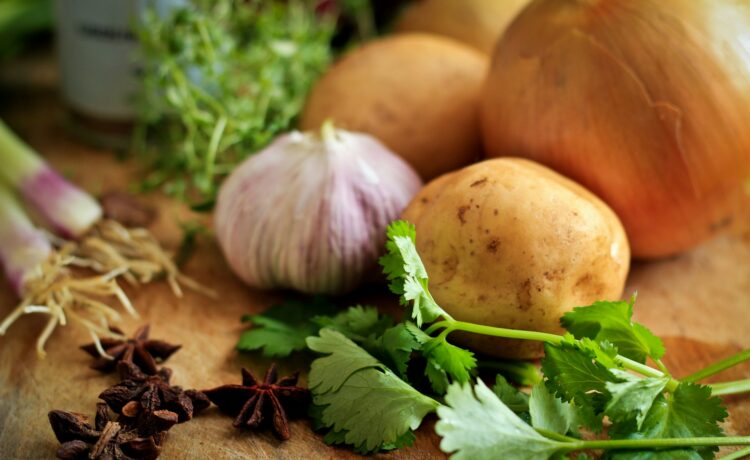Most of us prepare food daily without knowing that it poses some danger to our lives at certain instances. It is worth recalling that the kitchen is one of the most dangerous places as far as bacterial contamination is concerned. That is why information about safe preparation of meals is very valuable to anyone, who loves cooking or just wants to prepare meals for their loved ones safely.
Diet is very important and whether you are cooking a simple meal for the family in the middle of the week or preparing for a dinner party, understanding how to handle food will help in a big way. Everything, right from washing vegetables properly to making sure your meat does not go bad is important in food hygiene.
Let’s look at some of those practical techniques you can use to bring out the gourmet in you coupled with operations that will ensure you do not get sick.
The Importance of Safe Food Preparation
Harmful foods should be prepared safely to avoid negative impacts on the health of users of such foods, including family members. Each year, millions become ill from contaminated foods in a scenario that could have been prevented had the Produkte’s handlers in this case acted professionally.
It is crucial to identify operational risks that relate to raw food materials. Many illnesses resulting from food poisoning are caused by dangerous bacteria such as E. coli or Salmonella can be found on contaminated surfaces or on products that have not been washed thoroughly. These pathogens mostly affect people in areas where standards of hygiene are low or are not practiced at all.
Furthermore, safe food preparation leads to certainty of the cook since they are assured that the food they prepare is safe for consumption. Trying to consciously avoid getting sick ahead of time lets you focus on the task at hand without worrying about getting a cold, at least in theory.
By respecting safety issues in the kitchen you are not only helping to prevent the biggest health issues around the corner, but also providing people the option to enjoy good food and forget about health risks for a while. By engaging in these activities, a culture of compassion and accountability about the supply of food and sustenance is established.
Maintaining good food hygiene tips is essential for ensuring safety and health when handling or preparing meals. Start by washing hands thoroughly with soap and water before touching any food. Use clean utensils, cutting boards, and surfaces to prevent cross-contamination. Always separate raw meats from ready-to-eat foods to reduce the risk of harmful bacteria spreading. Store perishable items in the refrigerator at the appropriate temperature and check expiration dates regularly. Additionally, cook food to the recommended internal temperature to eliminate potential pathogens. Adhering to these food hygiene tips helps promote a safer dining experience.
Understanding Foodborne Illnesses
Foodborne diseases are recognized as a major public health problem around the world. They develop when individuals take food or drinks that contain toxins within them. These infections are usually caused by bacteria, viruses and parasites.
Signs and symptoms of food poisoning are relatively widespread and may include feelings of nausea and vomiting, diarrhoea, vomiting or stomach pains. Such signs may be moderate or severe and may hence call for medical intervention.
High-risk individuals accompanied by young children, the elderly, pregnant women and all those with a compromised immune system. This article shows that even those small lapses in food hygiene can result in very dangerous events.
These are the risks that everyone who cooks at home or is involved in the food manufacturing business ought to know. Knowledge of how pathogens transmit leads to the prevention of diseases in the right manner.
It is widely understood that hygiene barely has any better significance when it comes to the overall well-being of a human being as well as the public. Measures to reduce cross contamination go along way into ensuring everyone’s safety is well catered for.
Key Steps to Safe Food Handling
Appropriate handling of foods is crucial in order to avoid getting sick. There are five main strategies that are important to remember below.
To start with, let’s not forget to wash our hands before preparing the food. Wash with soap and running water for not less than twenty seconds. This single process can reduce the number of bad bacteria.
Second, wash raw foods with different utensils from cooked foods because most of the dangers from raw foods emanate from contamination from cooked foods. Cooking becomes a problem once the raw foods come close to the other as they can easily influence the taste and quality of each other or once you use the same cutting board or utensils without washing them in-between.
Third, make sure all meat, poultry and seafood are at a proper internal temperature to avoid under cooking it. A food thermometer is a good bet in this case.
Fourth, store perishable foods in a refrigerator not more than two hours after cooking or after buying them. Letting food stay out for too long is a good way for germs and bacteria to thrive in the food.
Always remember to look for the dates of conservation of products at your pantry and refrigerator. Eating expired foods have severe effects on our health that could be prevented by a simple check on the expiry dates.
Proper Storage Techniques for Fresh Foods
Proper storage of fresh foods is very critical in as much as quality and safety of the foods are concerned. The right integration begins with selecting the right containers. Using glass containers or BPA-free plastics are fine as they do not leach any chemical that is bad for your produce.
Temperature matters too. Don’t take a long time to store perishable foods to reduce the rate of food decomposition. Crisper drawers are the best places to store your fruits and vegetables – they control the moisture content.
Don’t forget about airflow! Allow store items to be free flowing or in bags or containers to help avoid condensation, which usually promotes mold formation. Store ethylene releasing fruits such as apples and bananas away from veggies since they can cause quicker ripening or spoilage.
It is easy to know which foods are fresh when you name the foods in the foods storage with dates. So that the older items get used first, move them forward most of the time. This habit helps eliminate food wastage while giving clients tasty meals full of nutrients and in their best quality.
Ensuring Clean and Sanitized Kitchen Surfaces
I noticed firsthand that kitchen surfaces are frequently not sanitised and cleaned in accordance with food safety rules. Especially on the countertops, cutting boards, and utensils the bacteria flourish if they go unwashed. Cleaning of those areas often is a key way of reducing bacterial infection that may result in food poisoning.
First, one should learn to clean surfaces with hot soapy water soon after use. Concentrate most of your efforts on the sections that involve handling of raw food products. Upon washing, rinse with a sanitizer – this can be another soaked wipe with water and vinegar or a kitchen sanitizer known to the owner.
It is also important also not to neglect contact surfaces such as handles, knobs, and faucets. These areas are frequently contaminated with pathogens because they are wiped clean and used over again several times a day. It will also keep them safe if you give them a quick wipe with your sanitizing solution.
Just as a reminder sponges should be replaced quite often because they attract bacteria and mold rather quickly. Eschew cloths that may merely circulate germs around the kitchen; in their place, use disposable wipes or paper blotting.
By making sure all the surfaces stay clean and sanitized you reduce the chances of getting infected by diseases or causing others to get infected too while cooking. It should become second nature especially when you are in the kitchen preparing meals because ‘well chosen’ advice enhances the hygiene of your foods to the benefit of all consumers.





